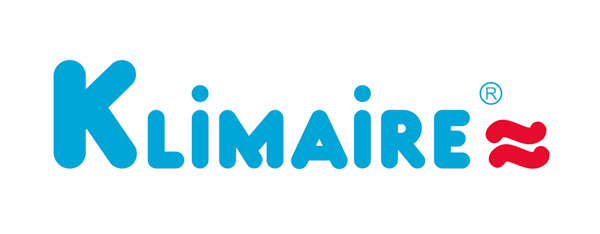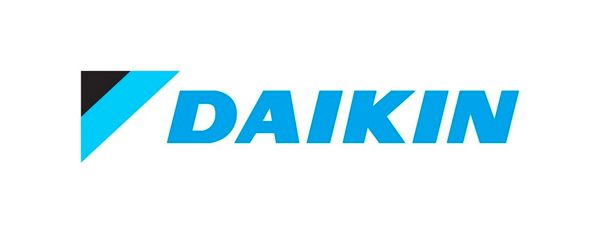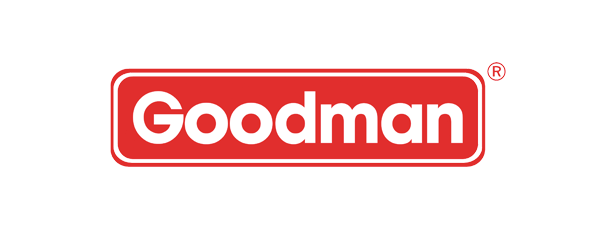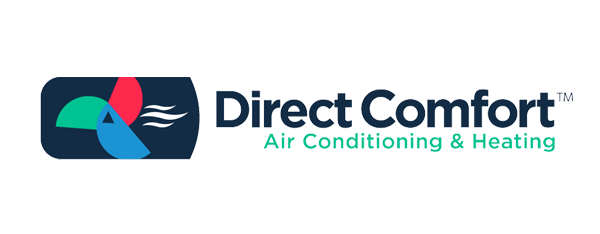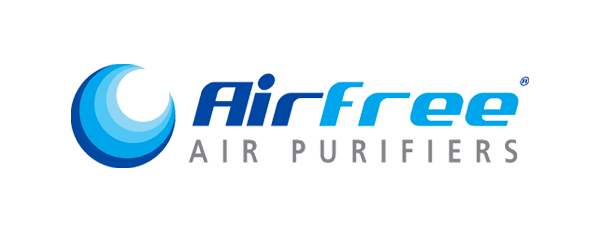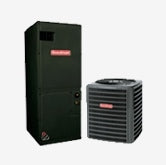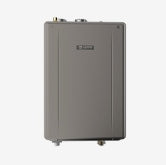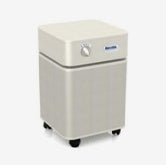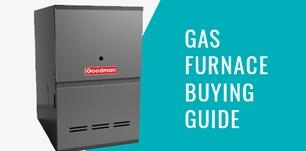Best Gas Furnace Buying Guide

We get it. You need a new furnace but furnace-shopping doesn't make your heart skip a beat like buying the latest gadget or a new luxe sofa.
Instead of rushing to get it over with, slow down. Make the right choice and you’ll recoup your money through lower energy bills and make a huge impact on your indoor comfort.
Eliminate frustrating hot and cold temperatures swings typical with on/off HVAC. Modern systems automatically adjust to maintain steady comfort. They also operate quietly, shrink your environmental footprint, and with built-in self-diagnostics, make preventative maintenance a cinch.
We promise after browsing our simple buying guide, terms like AFUE, ECM and modulating gas valve will be commonplace and you'll be confident about picking the right furnace for your needs.
To get you started, we’ve defined some basic terms to familiarize you with the main features that influence price and performance. If you’ve already aced “HVAC 101,” then jump ahead and read the section that matches the reason you need a new heating system. You can also dive right into Features and Options Explained and The Bottom Line on your choices. Our QUICK VIEW Furnace Ratings puts it all together in a simple chart.
Capacity
The “size” of a furnace or furnace plus AC system, known as an air furnace matched system, is measured by its hourly heating and/or cooling output. It is listed as BTU or BTU/h. The capacity of HVAC is also calculated in tonnage. The higher the BTU measurement, the more powerful the unit. To determine the furnace or furnace and air conditioning system capacity that you need, please contact us for a free consultation or ask your HVAC technician.
Packaged Units
These all-inclusive central ducted heating and cooling solutions are stored outside on the roof, in a crawl space or at ground level. There are several configurations.
Gas/Electric Packaged Units: Gas furnace heat combined with air conditioning.
Heat Pump Packaged Units: Heat pumps cool the air using the refrigeration cycle and provide heat by reversing the refrigeration cycle.
Dual-Fuel Packaged Units: They combine the enery-efficiency of heat pump heating and cooling as well as gas furnace heat when the winter temperatures are too cold for the heat pump to be practical
AFUE
Your Annual Fuel Utilization Efficiency (AFUE) measures the efficiency of a gas furnace in converting fuel to heat energy. For example, an 80% AFUE rating means that 80 cents out of every $1 you spend to heat your home is actually used by the furnace to warm your home. Keep in mind, AFUE does not take into account heat loss due to faulty ducts or poor insulation.
Non-Condensing vs Condensing
Furnaces with a minimum AFUE (efficiency) of 80% are non-condensing furnaces. They have one heat exchanger. After passing through the heat exchanger, the exhaust is vented out of your home. In contrast, condensing furnaces have an additional heat exchanger so that the most amount of heat can be “squeezed” out in the process. Condensing furnaces have a minimum AFUE of 90%.
Flue
Exhaust resulting from gas combustion must be vented out of your home. Furnaces with a minimum of 80% AFUE (efficiency) will use a metal flue to vent the high heat exhaust out of your home. High-efficiency furnaces, also called condensing furnaces, have a minimum AFUE of 90% and require at least one PVC pipe. PVC is required because the condensing of exhaust in the secondary heat exchanger creates moisture, which is corrosive to metal. A 2-pipe system can improve efficiency, improve air quality and prevent backdrafts. One pipe is used for condensation drainage out of your home and the other pipe pulls in outside air to draft your furnace. High-efficiency furnaces with 96% AFUE that are non-condensing are available also.
Valve type/Also called Stage
The valve controls the release of gas to the burners. A one-stage valve always opens fully for maximum capacity. A two-stage valve, however, opens partially for low heat, or fully in its “second stage,” for high heat. The third type of valve is modulating. The valve releases gas according to the amount of heat required to reach and maintain the set temperature.
Speed
Speed refers to the technology of the circulating blower motor, which forces conditioned air though your ducts. Single-speed circulating blower motors have one speed. This means your furnace is either on or off. Multi-speed motors have more than one speed that the furnace can be set to through its wiring. Upon installation, your technician will determine which speed is best for your home. The speed can only be changed through the hard wiring. Multi-speed ECM (Electronically Commutated Motors) also have a fixed number of multiple speeds but the self-adjusting technology of ECM changes “gears” as needed to maintain a steady temperature. Variable speed ECM technology also auto-adjusts heat output but there are no speed limitations.

What's Your Reason for Furnace Shopping?
#1 Replacing or upgrading current gas furnace or air furnace matched system
#2 Renovation/changing from an oil or electric furnace, boiler or electric heat to a gas furnace
Renovation/changing from an oil or electric furnace, boiler or electric heat to a gas furnace
Oil furnaces
The standard of yesteryear, oil furnaces still have their place in older homes in some harsh northeast US climate zones, but if your oil furnace’s efficiency has become as volatile as oil prices, you’d be wise to changeover to natural gas. Like oil, natural gas produces high heat making it suitable for cold climates but unlike oil, its price is reliable and its source abundant. Natural gas is the top heating fuel in the US, accounting for 57% of households. If you don’t already have a natural gas hook up, contact your local gas company to research the cost of extending a service line to your property.
Electric furnaces
Electric costs continue to rise. Even in mild climates, when an electric furnace needs replacing, it makes sense to upgrade to the latest, most efficient technology. If you don’t have central AC, seize the opportunity to purchase a small gas furnace and a matching condenser and coil for modern central heating and cooling. For those who already have central AC, contact us for a consultation and help finding a compatible furnace.
Still another choice is staying with electricity but cutting your energy bills by 30% to 40% with an air conditioner heat pump system.
Boilers
You may not believe it now, but when your boiler fails you’ve been given a chance to make a new start and do more with less. Say goodbye to the pops and hisses of your old boiler and welcome gas furnace centralized heat and air conditioning. If you don’t have a separate central cooling system, choose a gas furnace and condenser paired with a coil for an all-in-one solution. If your central AC is working fine, contact us and we'll help you select a matching furnace.
Did you Know?
- The majority of gas furnaces on the market are designed for natural gas but are convertible to propane with a conversion kit.
Features and Options Explained
A well-informed evaluation and comparison of system efficiency goes beyond AFUE.
Design enhancements increase efficiency, decrease operational sound, add user-friendliness and perfect temperature control.
- Eliminate cold and hot spots (temperature swings) with a continuous fan. The fan will run independently of the burner to circulate the already heated air.
- Cut energy usage and reduce noise with a dual or variable speed induced draft blower
- Choose an Energy Star® certified unit and seek a rebate from your utility company
- Prevent breakdowns with self-diagnostic fault code display
- Reduce installation costs with flexible application, multi-position units
- “Futurize” your home by selecting a smart home- or Wi-Fi-compatible system
Speed + Stage: Why it Matters
Because the most highlighted features of a furnace are the gas valve (stage) and type of circulating blower motor, here’s more detail so you can determine what is right for your comfort style.
Speed Choices
Single Speed - A basic on/off conventional system.
Pros: Can be the right choice for homes with mild winters and instances when upgraded controls are not necessary. A one-speed heating system comes on once your indoor temperature falls below the thermostat setting and turns off when it reaches the setting.
Cons: The constant turning on and off of the furnace creates wear and tear on the system, relies on hot and cold swings to function, can be noisy -- especially in homes with narrow ducts -- and consumes maximum energy each time the blower revs from full stop to full speed.
Multi-Speed - A multi-speed (sometimes called various speed) motor has several fixed speed options. Upon installation, your technician will determine speed selection.
Pros: The availability of different speeds enables best matchup to the layout of your home's particular ductwork and if you plan to hook up a condenser and coil fan to your furnace for central air conditioning.
Cons: Once programmed to a set speed, your furnace will operate as a single-speed motor. You won’t be able to adjust it with your thermostat or any other external control; it can only be changed again through the hardwiring. Like single-speed models, these can be tough to find with sound-reducing and energy-saving features such as a dual-speed draft inducer. Most likely not compatible with higher-end smart home systems.
Multi-Speed ECM - A multi-speed motor ECM (Electronically Commutated Motor) automatically transitions within a set range of multiple speeds according to the heat load.
Pros: Technology that speeds and slows according to temperature demands replaces abrupt powering on and off of the motor. In homes with narrow ducts, the motor will adjust speed to keep pressure and noise down. Smooth shifts in speed extend system life by reducing wear and tear. Energy efficiency is also higher because usage is in step with actual temperature needs. This category usually comes with smart home / Wi-Fi thermostat-compatible technology, standard two-stage valve, and sound reduction design. Noticeable energy savings can justify initial expense while reducing your carbon footprint.
Cons: The range of speeds is set, so the synching of the speed to heat requirements has some limitation. Cost is higher than a single-speed or multi-speed furnace. Replacement parts and repairs are more expensive than a single or multi-speed motor.
Variable Speed - Driven by ECM but with no set speeds.
Pros: Enables the most precise speed to heat load match. Noise and wear and tear are least compared to other motor types. Achieves the highest energy savings and steadiest, most consistent comfort. When designed with high-tech valves and condensing furnaces, they can reach near-perfect efficiency. Available with the latest technology and usually compatible with smart home systems. Initial investment is recoverable through lower energy bills.
Cons: Highest price range. Replacement parts and repairs can be double that of a single speed motor.
Valve Choices
Single-Stage - Valve regulating gas to burner has one position.
Pro: Lowest price within its AFUE class.
Cons: Does not conserve fuel. No customization of heat output.
Two-Stage - A two-stage valve opens fully for maximum heating capacity or partially (half) for less heat output.
Pros: Enables fuel conservation when high heat is not necessary. The valve keeps flow at 60-80% most of time and only opens fully during extreme cold weather. Provides 80% and up AFUE.
Cons: Adds to the cost of furnace.
Modulating - Self-calibrating gas valve that finely regulates the flow of gas in unison with the speed of the variable speed circulating blower motor.
Pros: Most precise temperature control, highest energy efficiency - up to 98% AFUE.
Cons: Highest price category.

The Bottom Line: Final Selection
Putting it all together, if you focus on the main differentiators in furnace engineering, it comes down to:
Good: Minimum 80% AFUE
This is pretty much a basic furnace that could be right for you if you live in a moderate climate with minimal number of heating days. A 1-stage, multi-speed furnace would be at the high end of the low range.
Better: 80% AFUE plus energy-efficient “bells and whistles” that boost AFUE and accurately control temperature
Note that the actual AFUE percentage gain most likely won’t be stated in the manufacturer literature but rest assured that upgrades such as auto-adjust ECM technology and a continuous fan are very apparent in performance.
If you appreciate high-tech automation but don’t have a PVC flue already and don't want the extra remodeling expense, a solid mid-range choice may be a two-stage valve paired with a multi-speed ECM or variable speed. Available with models that meet California low-NOx emissions standards, which also results in better indoor air quality and less environmental impact.
Can be about $300-$500 more than a basic, non ECM, one-stage furnace.
Best: Minimum 90% AFUE
These are usually condensing furnaces, which require at least one PVC pipe. If you want to see your energy bill go down but can go without the benefits of ECM, you can choose a condensing furnace with a 1-stage valve and one-speed or multi-speed motor for a lower upfront cost.
A modulating gas valve/variable speed furnace can achieve near total efficiency and fine-tuned climate control. Since efficient furnaces generate fewer emissions (models likely meet California low-NOx rules), environmental considerations and improved indoor air quality can also sway your decision. At the highest end of the spectrum, variable speed induced draft blowers replace dual speed.
Can be about $500-$700 more than a non-condensing, non-ECM, 1-stage furnace.
Talking to your HVAC installer Helpful Hints
- Be informed. Ask us and read this Furnace Buying Guide before meeting with an installer
- Conduct a home energy audit. There's no sense getting a super-efficient system and letting the conditioned air escape
- Make sure that any professional installation quotes also include costs for any changes to your infrastructure such as electricity, ductwork, vents and insulation
- Find out from your local building department or contractor if an installation permit is required
- Keep in mind your BTU for heat will more than likely not equal your BTU for air conditioning
Check out our blogs for additional help making the wisest choice for your home HVAC needs.
Replacing or upgrading current gas furnace or air furnace matched system
More than likely, your old furnace is less efficient and one speed. Efficiency 20 plus years ago ranged between 56% and 70% AFUE. As of January 2015, gas furnaces in the US must have a minimum efficiency rating (AFUE) of 80% for non-weatherized (intended for indoor installation) units and 81% for weatherized units (intended for outdoor installation).
When replacing your old furnace, you have the chance to include several upgrades that can be well-worth the upfront cost. Simply upgrading to the minimum AFUE rating could save you almost 50 cents on every dollar you spend on heating. According to the Department of Energy, from 2007 - 2012, the average US household spent more than $700 annually on natural gas heating.
Consider what your annual savings could be with a more efficient unit, then multiply that over just a few seasons. It's easy to see how your initial investment will be quicked recovered. As far as the extra comfort and convenience of the new system, only you can put a price on that.
Families who have relied on window air conditioners or toughed it out with improperly-sized or failing central AC systems, can choose a furnace plus AC (condenser and coil) for an up-to-date, worry-free central heating and cooling system. Of course, you'll want to assess the condition of your ducts and insulation to determine if improvements are needed there as well.
Now it's time to look at your choices: Features and Options Explained
Check out our Helpful Hints for talking to your HVAC installer.
Follow our blog links below for additional help making the wisest choice for your home HVAC.
FIVE SIGNS YOU MAY NEED A NEW FURNACE
FIVE TIPS: PREPARING YOUR HOME FOR HEATING (FURNACE) SEASON



















































































